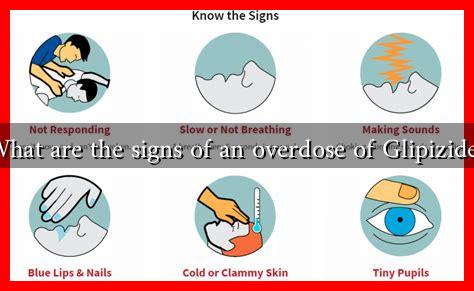-
Table of Contents
What are the Signs of an Overdose of Glipizide?
Glipizide is a medication commonly prescribed to manage type 2 diabetes by stimulating insulin release from the pancreas. While it can be effective in controlling blood sugar levels, an overdose can lead to serious health complications. Understanding the signs of a Glipizide overdose is crucial for patients, caregivers, and healthcare providers alike. This article will explore the symptoms, potential consequences, and necessary actions to take in the event of an overdose.
Understanding Glipizide and Its Mechanism
Glipizide belongs to a class of medications known as sulfonylureas. It works by increasing insulin production in the pancreas and enhancing the body’s sensitivity to insulin. While it is effective for many patients, the risk of overdose exists, particularly if the medication is taken inappropriately or in conjunction with other drugs that lower blood sugar levels.
Signs and Symptoms of Glipizide Overdose
Recognizing the signs of a Glipizide overdose is essential for prompt treatment. The symptoms can vary in severity and may include:
- Hypoglycemia (Low Blood Sugar): The most common and dangerous effect of a Glipizide overdose is hypoglycemia. Symptoms may include:
- Shakiness or tremors
- Excessive sweating
- Confusion or difficulty concentrating
- Rapid heartbeat
- Headaches
- Blurred vision
- Severe fatigue or weakness
- Seizures or loss of consciousness in extreme cases
- Gastrointestinal Distress: Nausea, vomiting, and abdominal pain may occur as the body reacts to the overdose.
- Neurological Symptoms: In severe cases, patients may experience dizziness, fainting, or even coma.
Case Studies and Statistics
According to a study published in the Journal of Diabetes Research, hypoglycemia is a significant concern for patients taking sulfonylureas like Glipizide. The study found that approximately 10-20% of patients experience at least one episode of hypoglycemia during their treatment. In cases of overdose, the risk of severe hypoglycemia increases dramatically, necessitating immediate medical attention.
In a case reported by the National Institutes of Health, a 65-year-old male patient was admitted to the emergency room after taking an excessive dose of Glipizide. He presented with confusion, sweating, and a blood glucose level of 30 mg/dL, indicating severe hypoglycemia. After receiving glucose treatment, his condition stabilized, highlighting the importance of quick intervention.
What to Do in Case of an Overdose
If you suspect that you or someone else has taken an overdose of Glipizide, it is crucial to act quickly:
- Seek Immediate Medical Attention: Call emergency services or go to the nearest hospital.
- Monitor Symptoms: Keep track of any symptoms that develop, as this information can be vital for healthcare providers.
- Do Not Eat or Drink: Unless advised by a medical professional, do not attempt to consume food or drink, as this may complicate treatment.
Preventing Glipizide Overdose
Preventing an overdose begins with proper medication management. Here are some tips:
- Follow Prescriptions: Always take Glipizide as prescribed by your healthcare provider.
- Regular Monitoring: Regularly check blood sugar levels to ensure they remain within the target range.
- Educate Yourself: Understand the signs of hypoglycemia and how to manage them effectively.
- Communicate with Healthcare Providers: Discuss any concerns or side effects with your doctor.
Conclusion
Glipizide can be an effective medication for managing type 2 diabetes, but awareness of the signs of overdose is essential for patient safety. Symptoms such as hypoglycemia, gastrointestinal distress, and neurological issues should not be ignored. Quick action can prevent severe complications and ensure proper treatment. By following prescribed guidelines and maintaining open communication with healthcare providers, patients can minimize the risk of overdose and manage their diabetes effectively.

